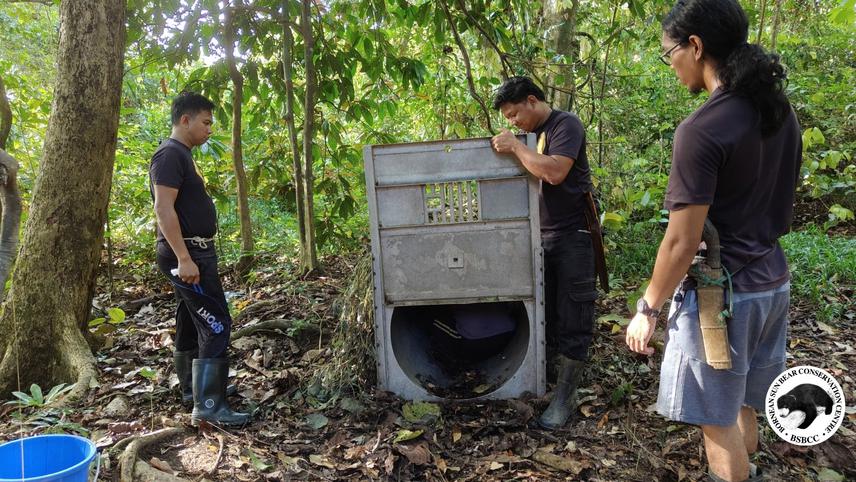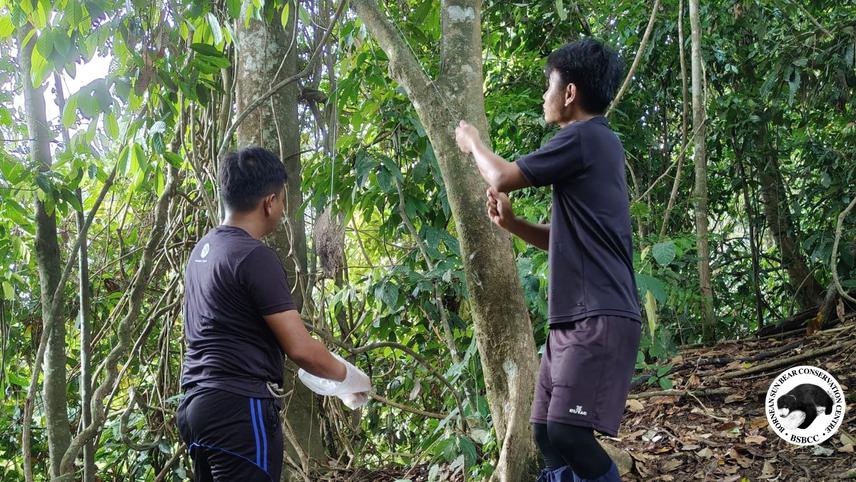Elvia Chong Qi Ern
Sun bears (Helarctos malayanus) are the smallest of all eight bear species in the world. They are listed as vulnerable in the IUCN red list. Bornean sun bears (Helarctos malayanus euryspilus) are the subspecies of Malayan sun bears (Helarctos malayanus malayanus). Both species can be found in Malaysia, however, knowledge and research on them are limited. There are only a few studies on them on their ecology in the wild. Therefore, this study's main aim is: (i) to determine the home range, (ii) movement pattern, (iii) activity pattern, and (iv) occupancy of Bornean Sun Bear (Helarctos malayanus euryspilus) at the western part of Tabin Wildlife Reserve. As Tabin Sun Bear Project under Bornean Sun Bear Conservation Centre care and rehabilitate young rescue cubs before they will be released into the forest. Studying wild sun bear’s ecology can help prevent unwanted conflict between the wild and rehabilitated sun bear.

© Bornean Sun Bear Conservation Centre (BSBCC).
According to Wong (1997), the average daily movement of the Bornean sun bear is 1.455km. This project will be divided into two components: (i) setting up camera traps and (ii) fitting radio-transmitter satellite collars on wild bears. Camera traps will be set up along forest trail in a square grid cell arrangement of 1.5km apart. They will be mounted on trees at knee level. This will be used to determine the activity pattern, occupancy of sun bear. Bait stations will be set up along the forest trail. Bait like chicken intestine, salted fish and shrimp paste (local known as Belacan) will be placed in a mesh net and placed on the tree. As it is an effective bait to attract sun bear according to Tee et al., 2021. Once there are signs of sun bears, like the claw mark on a tree and from camera traps, the bear trap will be placed. The bait will also then be placed in the trap. The trap will be checked everyday and non-target species will be released immediately. Captured bears will be anaesthetized by certified vets and monitored throughout the whole process. They will then be fitted with radio-satellite collars and all data needed collected from the bear. The bear will then be released and this will send out the location of the bear to determine the home range, movement patterns and activity patterns of the bear.

© Bornean Sun Bear Conservation Centre (BSBCC).
Header: Photo of bear by Bornean Sun Bear Conservation Centre (BSBCC).